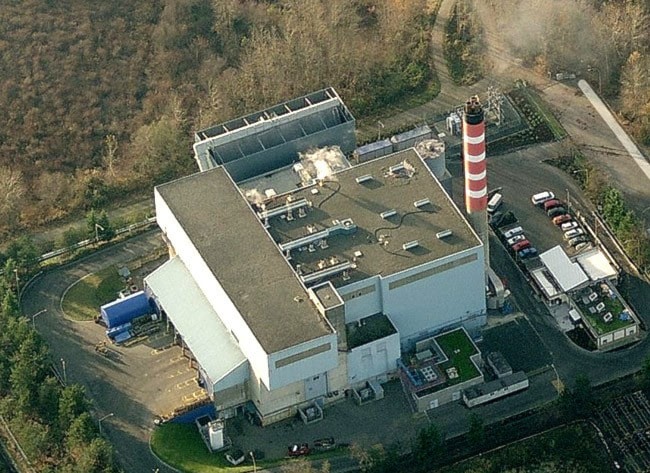Environmental impacts will be "inevitable" if Metro Vancouver insists on burning garbage, said FVRD chair Sharon Gaetz.
Metro's existing incinerator in Burnaby is continuing to exhibit a pattern of failed toxicity tests.
Samples of bottom ash recently tested positive for high concentrations of cadmium – some at twice the allowable levels for landfills.
“It defies logic that Metro Vancouver is continuing with a proposal to build a second, larger incinerator while they have repeatedly shown that they cannot even properly manage the smaller one already in operation," said Gaetz in a FVRD release.
FVRD is expressing concern and frustration in wake of a Metro Vancouver staff report from solid waste services GM Paul Henderson. It showed that bottom ash loads have failed 19 times out of 479 tests so far this year, with eight tests coming back at more than twice the limit.
“This unsettling report demonstrates the environmental problems that inevitably arise when you burn garbage," said Gaetz.
The testing failures are different from the high cadmium levels detected a year ago in some fly ash that came from scrubbers in the waste-to-energy plant's stack. Operator Covanta Energy failed to report those until they were already dumped at the Cache Creek regional landfill.
FVRD officials want to pursue greener initiatives for solid waste management, avoiding garbage incineration all together.
Trouble with incoming ash loads was first flagged in 2007, when some bottom ash exceeded allowable levels of lead, but the report says subsequent testing determined it wasn't hazardous to workers and steps were taken to ensure compliance with the landfill's operating certificate. Bottom ash ends up in the Vancouver Landfill at Burns Bog in Delta.
Metro was advised starting in April of this year that some bottom ash was exceeding leachable cadmium levels. Henderson also noted that the amount of cadmium in the waste stream is increasing over time, which suggests that cadmium toxicity in bottom ash is a problem that will likely get worse, not better.
FVRD’s newest Solid Waste Management Plan, set to be finalized in 2014, includes a more aggressive ‘Zero Waste’ strategy, which involves removing considerably more recyclable material from the waste stream with cost-effective, readily available technology.
On the proposal to build a second incinerator, Chair Gaetz said: “Burning garbage simply doesn’t make sense. We know that there are cheaper, greener, and more energy efficient approaches to waste management.”
FVRD favours what they call "maximized" waste reduction, meaning more jobs, and less waste to the landfill, and protection of the sensitive airshed.
"The FVRD believes we have a responsibility to our citizens and our environment to maximize recycling and recovery efforts in the region, and to think beyond burning garbage."
Some alternatives being discussed by FVRD are at: www.facebook.com/airqualitymatters
According to Metro, sources of cadmium in the waste stream are thought to have increased in recent years.
Household batteries are the main source, particularly rechargeable batteries, including e-device batteries. A much smaller fraction likely comes from plastics.
Metro officials say they intend to further study cadmium sources in the waste stream and to work with Covanta to ensure the treatment of bottom ash to neutralize metals is effective.
--with files from Jeff Nagel
jfeinberg@theprogress.com
Twitter.com/chwkjourno
